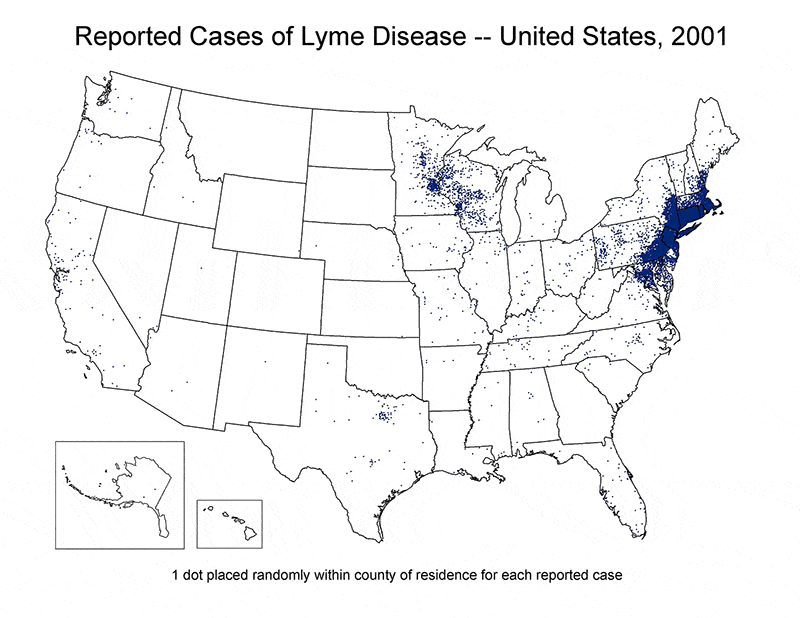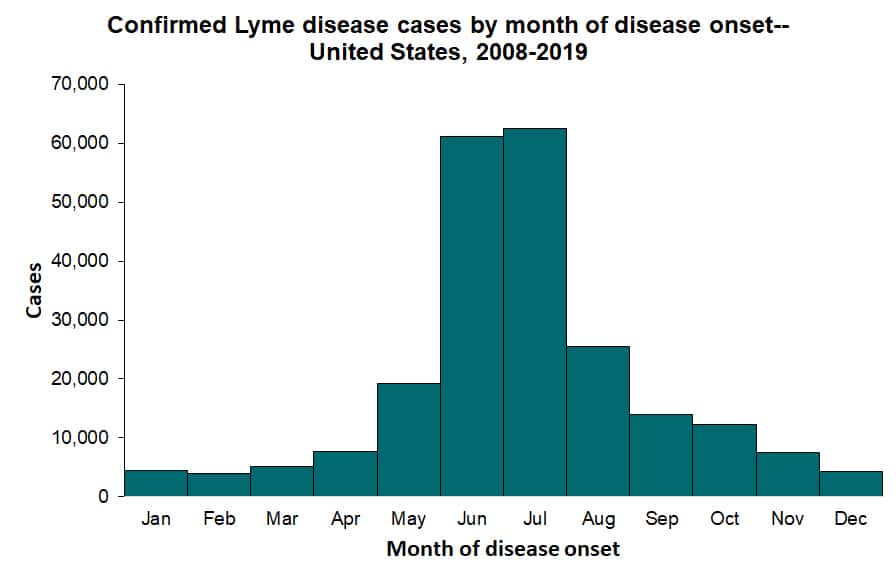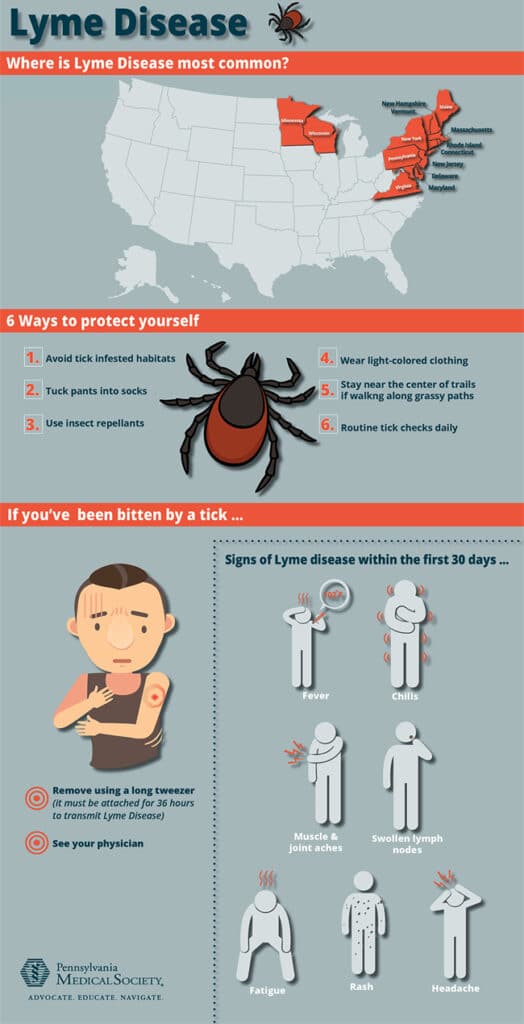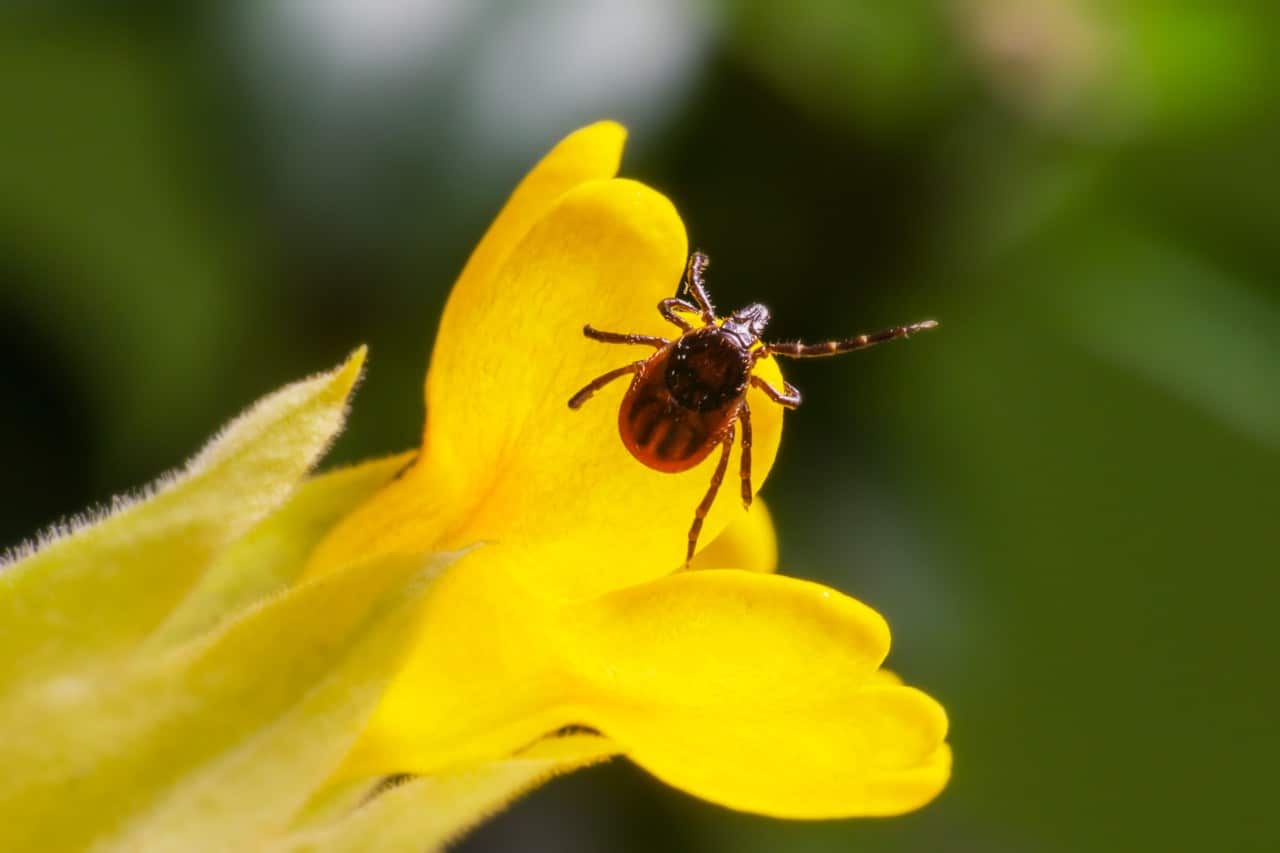
*Updated April 20, 2022
*COVID impacted Lyme disease reporting in 2020/2021
Each year, approximately 30,000 cases of Lyme disease are reported to the CDC by state health departments. As Lyme disease continues to wreak havoc on Americans, especially those in the North East, we examine the growth of the outbreak in the U.S. since 2010, states with an uptick in cases and those that are most at risk to the spread of Lyme disease.
This said, as stated by the CDC, “There is no way of knowing exactly how many people get Lyme disease. A recently released estimate based on insurance records suggests that each year approximately 476,000 Americans are diagnosed and treated for Lyme disease. This number is likely an overestimate of actual infections because patients are sometimes treated presumptively in medical practice”
Since the early 2000’s national and state health departments have been actively tracking Lyme disease cases. Statistics seem to show that Lyme disease continues to build each year and spread to new areas of the United States. What was once an illness seen in heavily wooded areas of the New England region has now spread South and West seemingly gaining a foothold in almost every state. States and regions near to the Northeast U.S. have the largest increase in cases, but now, even Midwestern states are reporting Lyme disease in their areas.
What to Expect in 2023
Lyme disease is a bacterial infection you get from the bite of an infected tick and if not treated effectively, it can cause great pain and illness to someone. As we enter the 2023 tick season, Dr. Sunjya Schweig, founder of the California Center for Functional Medicine, stated that “From what we are seeing so far, there has been an increase in tick bites in the United States this year and therefore we can assume there would be more tick-borne infections”. Because warmer, shorter winters from climate change have played a role in the increase of tick-borne illnesses and this again is a reason why case numbers continue to rise.
State, Cities and Populations Most Affected By Lyme Disease
When looking at data from the CDC, we can see that Lyme disease is most prevalent in the Northeast of the U.S. but over the past few years, it has started to spread Northwest And South. In the table below, you’ll notice 11 states with the highest reported cases along with an incidence rate. The incidence rate is the number of cases per 100,000 people.
Pennsylvania continues to lead the U.S. in the largest number of reported cases each year. However, Maine reports 121 cases per 100,000 people beating out the rest of the U.S. Second closest is Vermont reporting 113 cases per 100,000.
There are only 3 states in the Northeast region that have reported a drop in cases; Connecticut (-33%), Wisconsin (-13) and Delaware (-2%). However, six Northeastern states reported large increases in the total number of cases during this ten-year period.
- Vermont has the largest increase of cases in all states seeing a rise of 744%
- Rhode Island cases increased by 292%
- Maine cases increased by 288%
- Pennsylvania cases increased by 173%
- New Hampshire cases increased by 106%
- New York cases increased by 78%
The table below showcases the growth of Lyme disease in 12 Northeastern states from 2010-2019.
| State | 2010 | 2011 | 2012 | 2013 | 2014 | 2015 | 2016 | 2017 | 2018 | 2019 | 2019 incidence | % Change 2010-2019 |
| Connecticut | 1964 | 2004 | 1653 | 2111 | 1719 | 1873 | 1238 | 1381 | 1268 | 1233 | 22.3 | -33% |
| Delaware | 656 | 767 | 507 | 400 | 341 | 334 | 391 | 421 | 505 | 641 | 63.6 | -2% |
| Maine | 559 | 801 | 885 | 1127 | 1169 | 993 | 1151 | 1424 | 1111 | 2167 | 121.2 | 288% |
| Maryland | 1163 | 938 | 1113 | 801 | 957 | 1249 | 1274 | 1194 | 894 | 1417 | 13.3 | 13% |
| Minnesota | 1293 | 1185 | 911 | 1431 | 896 | 1174 | 1304 | 1408 | 950 | 1528 | 16.2 | 18% |
| New Hampshire | 830 | 887 | 1002 | 1324 | 622 | 436 | 691 | 956 | 927 | 1710 | 81.3 | 106% |
| New Jersey | 3320 | 3398 | 2732 | 2785 | 2589 | 3932 | 3332 | 3629 | 2876 | 3619 | 27 | 9% |
| New York | 2385 | 3118 | 2044 | 3512 | 2853 | 3252 | 2623 | 3502 | 2446 | 4243 | 14.6 | 78% |
| Pennsylvania | 3298 | 4739 | 4146 | 4981 | 6470 | 7351 | 8988 | 9250 | 7920 | 8998 | 52.8 | 173% |
| Rhode Island | 115 | 111 | 133 | 444 | 570 | 564 | 535 | 595 | 661 | 971 | 49.7 | 744% |
| Vermont | 271 | 476 | 386 | 674 | 442 | 491 | 488 | 646 | 348 | 1064 | 113.1 | 292% |
| Virginia | 911 | 756 | 805 | 925 | 976 | 1102 | 976 | 1041 | 744 | 1199 | 9.2 | 32% |
| Wisconsin | 2505 | 2408 | 1368 | 1447 | 991 | 1309 | 1504 | 1794 | 1121 | 2178 | 20.9 | -13% |
| Total Lyme Disease Cases | 19,270 | 21,588 | 17,685 | 21,962 | 20,595 | 24,060 | 24,495 | 27,241 | 21,7712 | 30,978 | 61% |
Data Sourced from CDC
Most Common Months of Confirmed Cases
Lyme disease season starts in March and extends throughout September. Reported cases start coming in the spring as warmer weather moves into the states. However, over 54% of the total Lyme disease cases are reported in June and July. As the warmer months subside, cases start dropping along with the temperature which is why now is the best time to prepare.

| Month of Disease Onset | # of Cases Reported |
| January | 4,478 |
| February | 3,910 |
| March | 5,105 |
| April | 7,739 |
| May | 19,206 |
| June | 61,069 |
| July | 62,519 |
| August | 25,443 |
| September | 13,989 |
| October | 12,335 |
| November | 7,493 |
| December | 4,259 |
2023 Lyme Disease Season Expert Answers
Best Value Schools reached out to the Lyme Disease community and asked a number of experts for their thoughts about the 2022 Lyme Disease Season.
1/ It’s officially #LymeDiseaseAwarenessMonth & tick-borne illness season. Cases have increased by 64% since 2010. Check out what’s happening in your state as we approach summertime. Experts are encouraged to chime in! @lymenews @CDCgov @BestValueEdu
— Andrew Deen (@AndrewDeen14) May 12, 2022
https://t.co/0C9E11vHAe
What is your prediction for the 2023 Lyme Disease Spring and Summer seasons?
Megan Wede, the owner of Done Right Pest Solution who resides in Minnesota, another state ravaged by Lyme disease, stated that “Because last year was a dry year, I expect this year to be wetter, which means there will be more mosquitoes. Because ticks can survive winters underground, in underbrush, and by boring under tree bark, they were able to miss the freeze-thaw cycles that were prevalent in the Midwest this year. Other insects woke up early and died. I predict this year to be a worse tick year than last year.
How do you minimize the likelihood of a tick bite?
Dr. Rudolf Probst, a Medical Doctor specializing in immunology, gynecology, internal medicine and surgery lists these ways that you can reduce your chances of a tick bite and thus lyme disease.
- Cover yourself up with long-sleeved shirt, boots, long pants and tuck in your pants in your boots
- Do not walk through long grass and woods
- Check your pets for ticks
- Check your clothes for ticks
- Use insect repellent
- Get rid of a tick as soon as you spot one
- Shower immediately after coming from outside
- Wear light clothing in order to spot ticks.
Megan Wede, In her article, “How to Prevent Ticks in Your Yard,” explains some simple ways homeowners can prevent ticks:
- If you have a wooded area next to your property, consider having any patio, furniture, or active area of your yard at least 3 feet away.
- Add in some wood chips or gravel to close the distance between the woods and your yard.
- Walk your property with your pest control expert to learn of key areas where ticks can breed in your yard.
- Limit your activity in those areas and have the pest control expert treat those areas well.
Is it important to remove a tick quickly & what are the best ways to remove a tick?
Diane Vukovic, an outdoors expert and owner of Mom Goes Camping, has great experience removing ticks and states that “The chances of getting Lyme disease are very low if the tick is removed within 24 hours of attaching itself. However, it’s important that the tick is removed properly. Any method which irritates the tick – such as squeezing it, putting mint oil on top of it, or touching it with a hot match – increases the chances that the tick will regurgitate its stomach contents into the skin and transfer the Lyme disease bacteria.
The safest way to remove a tick is with tweezers with pointy ends, such as ones used for removing ingrown hairs. The point end makes it easier to grab the tick by its mouthparts. Avoid using tweezers with flat tips because you might accidentally squeeze the tick’s body. I always keep a pair of pointy tweezers in my hiking first aid kit. Because I’m outdoors so often and don’t always have my first aid kit with me, I’ve even started carrying a mini pair of tweezers with me in my wallet. This ensures that I can get ticks off immediately and safely.”
How can college students in rural, densely populated Lyme disease areas and campuses prepare?
Dr. Schweig states that “College students should absolutely know how to protect themselves from tick bites. It is definitely possible to get a tick bite and contract a tick infection while on a college campus. Ticks are often carried on to campus by squirrels, birds and rodents. Many will lay on campus lawns/parks and hang out with friends but it’s good to do it on a blanket or a hammock and to be sure to wear repellent and do tick checks afterwards”.
How to Prepare for Lyme Disease Season
Warmer weather is arriving and longer summer nights are ahead of us. But before they arrive, now is the best time to prepare for Lyme disease season. Simply being aware that this time of year is when ticks are likely to strike will ensure you remain conscious of any bites.
Be sure to keep bug repellent nearby at home and take it with you when you travel, especially if you are going camping or to woodland areas. Carrying small tweezers will also give you the best chance of removing a tick if one is to bite you or someone you are with. The Pennsylvania Medical Society has created this infographic to give you tips on how to protect yourself and what to do if you’ve been bitten.

Lyme Disease Useful Resources
Lyme disease is not something to mess around with. This section was created to provide you with some helpful resources you can use to learn more about identifying ticks, removing ticks and even getting your tick tested for Lyme disease.
Tick Identification: https://www.ticklab.org/tick-identification
Identify the Tick Challenge Game: https://www.maine.gov/dhhs/mecdc/infectious-disease/epi/vector-borne/lyme/game/index.shtml
Tick Removal: https://www.cdc.gov/lyme/removal/index.html
Lyme Disease Treatments: https://www.holisticbiospa.com/lyme-disease-treatments-mexico/
What Causes Lyme Disease? A Nurse Practitioner’s Guide – Bradley University Online
Test My Tick: https://www.ticklab.org/test-my-tick
More Information About Lyme Disease in Your Region
National
National CDC Lyme Disease Center
Connecticut
Connecticut Lyme Disease Information | CT.gov
Delaware
Delaware Lyme Disease Information | Delaware.gov
Maine
Maine Lyme Disease Information | Maine.gov
Tickborne Diseases | MainePublicHealth.gov
Maryland
Maryland Lyme Disease Information | Maryland.gov
Anne Arundel County Lyme Disease Info | AAHealth.org
Calvert County Lyme Disease Info | CalvertHealth.org
Hartford County Lyme Disease Info | Hartford County Health
Minnesota
Minnesota Lyme Disease Information | Minnesota Department of Health
High-Risk Areas for Tickborne Diseases in Minnesota | state.mn.us
Lyme Disease 101 | Minnesota Lyme Association
New Hampshire
Lyme and Other Tick-Borne Disease Information | NH.gov
Tick Free New Hampshire | TickFreeNH.org
Tick Season: What To Do If You’ve Been Bitten | New Hampshire Public Radio
New Jersey
New Jersey Lyme Disease Information | NJ.gov
Lyme Disease Frequently Asked Questions | NJ Department of Health
Comprehensive Care for Lyme Disease | StFrancisMedical.org
New York
Lyme Disease and Other Diseases Carried by Ticks | NY.gov
Tick & Lyme Disease Prevention | NYSenate.gov
Erie County Lyme Disease Info | Erie.gov
Orange County Lyme Disease Info | OrangeCountyGov.com
Pennsylvania
Pennsylvania Lyme Disease Information | Pennsylvania Department of Health
Pennsylvania Lyme Resource Network | PALyme.org
Montgomery County Lyme Disease Info | Montcopa.org
Chester County Lyme Disease Info | Chesco.org
Cumberland Country Lyme Disease Info | CCPA.net
Rhode Island
Rhode Island Lyme Disease Information | RI Department of Health
Jamestown Tick Talk | JamestownRI.gov
Lyme Center of New England | LymeCenterNE.com
Vermont
Vermont Lyme Disease Information | HealthVermont.gov
Vermont Tick Tracker | HealthVermont.gov
Supporting Vermonters Affected by Lyme | VTLyme.org
Milton Township Lyme Disease Info | MiltonVT.gov
Virginia
Virginia Lyme Disease Information | Virginia.gov
Loudoun County Lyme Disease Info | Loudoun.gov
Fairfax County Lyme Disease Info | FairfaxCounty.gov
Henrico County Tick-borne Diseases in Virginia | Henrico.us
Arlington County Lyme Disease Info | ArlingtonVA.us
Wisconsin
Lyme Disease in Wisconsin | Wisconsin.gov
Calumet County Lyme Disease Info | Calumet.wi.us
Lincoln County Lyme Disease Info | Lincoln.wi.us
Ticks & Lyme Disease Devil’s Lake State Park | DevilsLakeWisconsin.com
With tick season upon us, we are hopeful this guide will serve as a reminder on the danger of Lyme disease, and provide you some options as to how to reduce your risk of contracting the disease.

